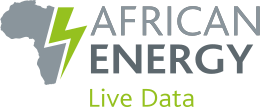President Alpha Condé faces a string of elections confronted by power outages and other services shortfalls that have brought protestors back on the streets. In this difficult context the Souapiti HEP dam’s start-up could provide a major boost at national and regional levels, according to African Energy Live Data’s analysis of Guinean developments through to 2022
President Alpha Condé faces a string of elections confronted by power outages and other services shortfalls that have brought protestors back on the streets. In this difficult context the Souapiti HEP dam’s start-up could provide a major boost at national and regional levels, according to African Energy Live Data’s analysis of Guinean developments through to 2022
Another bout of load-shedding brought angry protestors onto the streets of Conakry in January. While President Alpha Condé strode the international stage in his last days as African Union chairman, clashes back home over the lack of services highlighted the extent of shortfalls in the supply of power, water and other services.* This issue was expected to feature large in local elections, which were held on 4 February after eight years of delay blamed on a range of political and economic issues, including the 2013-16 Ebola crisis.
Those polls ended in acrimony, with opposition leaders crying foul amid claims of vote-rigging across the country. Further tests are expected if legislative elections can be held as planned later this year, ahead of the next presidential election, scheduled for 2020. The government is expecting a significantly improved provision of services by then, provided projects can be implemented and financial flows maintained.
While cash-strapped utility Electricité de Guinée (EdG) struggles with its pressing immediate problems, it could seek comfort in a more promising medium-term outlook. Analysis of African Energy Live Data's project pipeline for 2018-22 suggests installed on-grid capacity will more than double, rising from 498MW in February 2018 to 1,221MW in 2022. This depends on efforts to renovate malfunctioning local plants to near installed capacity, as well as bringing new capacity into service.
A substantial amount of this 723MW increase is expected to come from the 450MW Souapiti hydroelectric power (HEP) plant, being built by China International Water and Electric Corporation (CWE). Souapiti is expected to be brought into production between 2019 and 2021 – but exactly when remains unclear.
Described by CWE as the ‘Three Gorges Project in Guinea’, Souapiti’s power supply will have a considerable impact at national and regional levels. In addition to the 450MW supplied at capacity, Souapiti will help regulate the water flow of the Konkouré river, allowing the nearby Kaléta dam (also built and operated by CWE) to operate at full capacity. Designed to operate with Souapiti, Kaléta has only a small reservoir of its own and thus can only produce around 40MW of a total 240MW during the dry season.
Upon completion, Guinea expects to sell surplus power to neighbouring countries including Gambia, Senegal, Guinea-Bissau, Sierra Leone, Liberia and Mali. This would confirm the optimism of multilateral, bilateral and regional players who believe the West African electricity market can be overhauled with the implementation of long-mooted cross-border transmission schemes.
Critical to this are the several planned interconnection projects which are intended to improve regional electricity trade and domestic electrification. Chief among these are the Organisation pour la Mise en Valeur du Fleuve Gambie (OMVG) interconnection, which is part-financed by the World Bank Group. Transmission links will connect Gambia, Guinea, Guinea-Bissau, and Senegal; the interconnection is expected to be completed in 2022.
The Côte d’Ivoire-Liberia-Sierra Leone-Guinea (CLSG) interconnection, identified as a top five priority project for the West African Power Pool (WAPP)’s development, is expected in 2020.
But establishing a realistic timeline for Souapiti is difficult. Sources in Guinea talk of a completion date between 2019 and 2021, and CWE delivered the Kaléta project far ahead of schedule giving grounds for optimism. However, financing for Souapiti has hit stumbling blocks, with the Guinean authorities struggling to raise capital for the final 15% of the project.
18 guinea LIVE DATA chart.jpg
African Energy Live Data’s project pipeline for 2018-22 suggests Guinea may be able to tap another 273MW, which is announced to come online from five projects during the period. These include the 93MW Digan HEP dam (2021), 90MW Fomi HEP (2021), 40MW Khoumagueli solar (2020), 50MW Orion Mamou solar (Q4 2018) and the Nzébéla HEP project, which is expected to generate anything between 16MW and 48MW by a 2020 target date. InfraCo Africa and Aldwych International recently joined Solvéo Group to develop the Khoumagueli solar project (see – Guinea: InfraCo commits $3.1m to solar project). A 30MW HFO expansion is also expected online at AngloGold Ashanti de Guinée (SAG)’s Siguiri gold mine in 2018.
Should the Live Data pipeline projection be realised, Guinea’s energy mix by 2022 will be dominated by HEP, accounting for 73% of the total installed capacity. This is followed by HFO (14%), Diesel (7%) and solar (6%). Renewable energy would therefore increase from 62% of Guinea’s energy mix in 2018 to 79% in 2022.
This comes amid forecasts of substantial economic and population growth. International Monetary Fund data forecast sources an estimated population increase to 14.7m in 2022, from 13.2m in 2018. Should the project pipeline be realised, installed on-grid capacity per capita will double from 0.04kW/capita in 2017 to 0.08kW/capita in 2022. Meanwhile GDP growth for 2018 and 2019 is expected to be slightly above median growth projections for the region: the IMF forecasts a 5.8% rise in GDP in 2018 (slightly above the 5.26% median increase projected for West Africa) and 5.9% in 2019 (5.31% regional increase).
* Coverage of Guinea’s most recent energy crisis was published in issue 361 of African Energy, on 18 January – Fuel supply issues cause renewed Guinea load-shedding.
NOTE: Data in this article is presented for public use, providing the figures are attributed to African Energy Live Data.
This article is authorised for republication with attribution to African Energy Live Data



